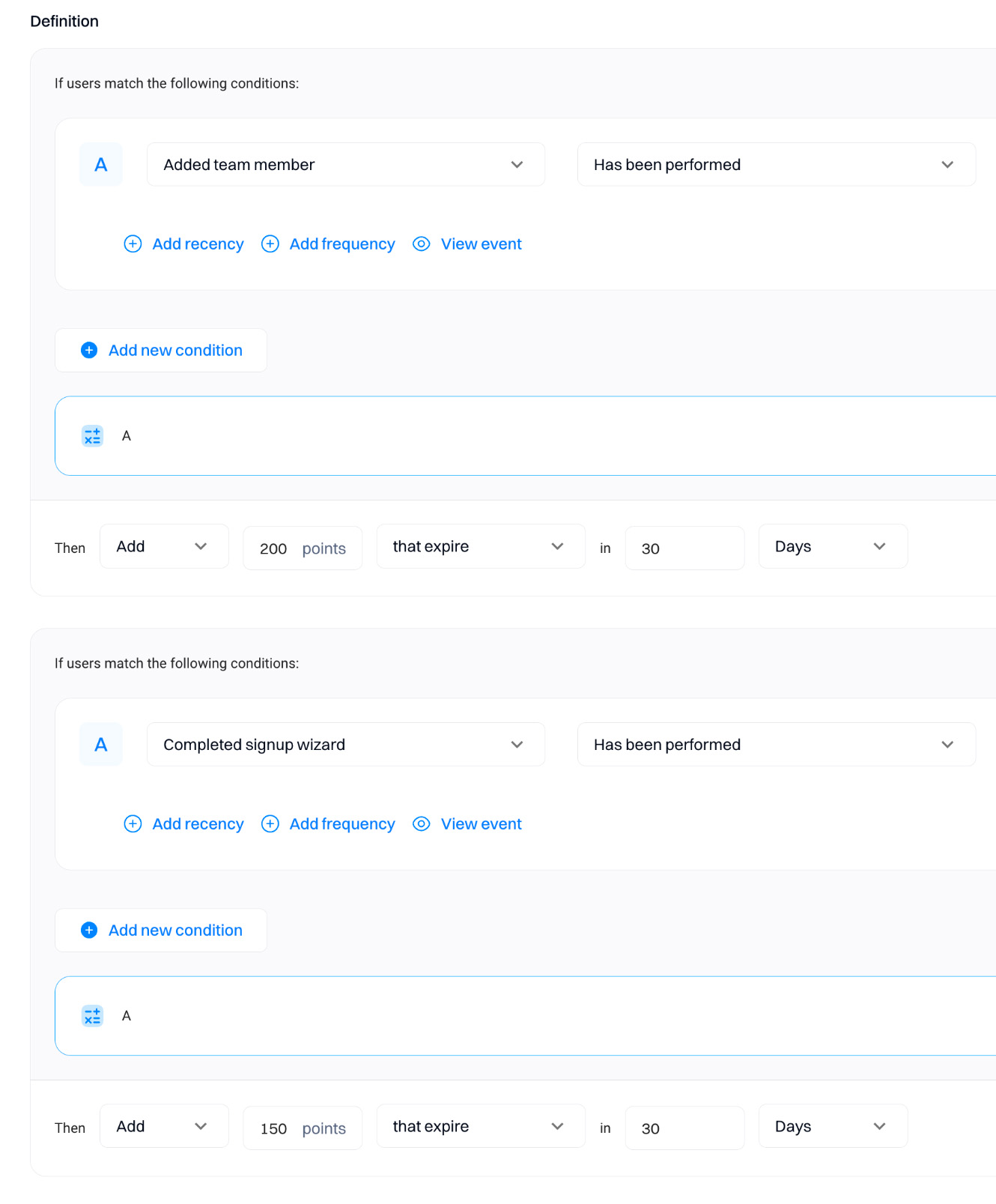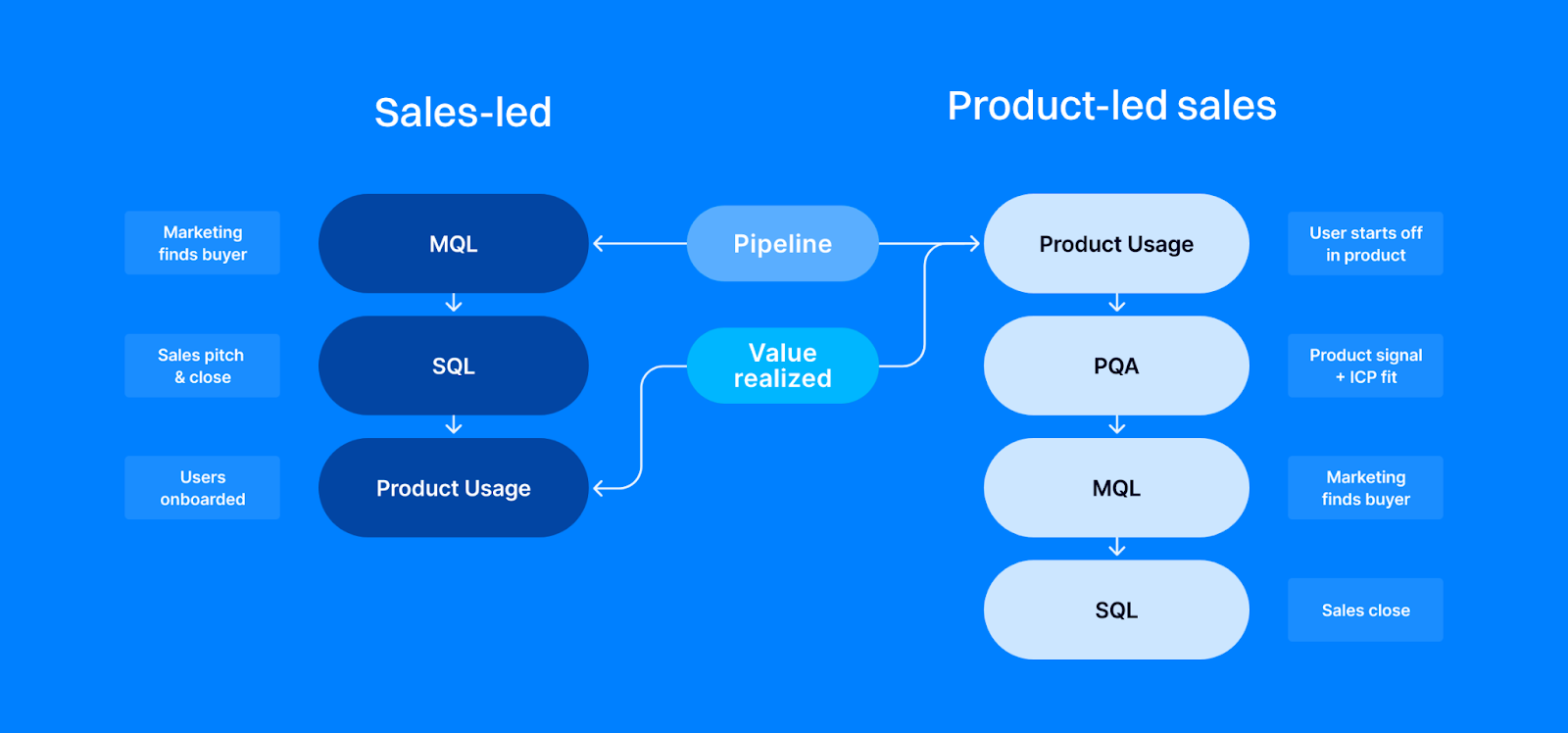Fit & engagement scoring guide
A fit & engagement score is a single metric that gives you a method of evaluating customer qualification & engagement on an individual or account level. In this guide, we’ll explain how fit & engagement scores are calculated in Intempt, why they’re so powerful, and five ways you can use them to reach your goals.



How is the fit & engagement score calculated?
An ideal customer fit & engagement score should take numerous types of attributes and engagement activities across different platforms into account. If this data exist in silos — lead data sitting in one platform, email interaction in another, and website activity in another — landing on a single score can be extremely difficult.
With Intempt, your data is unified and you have a single view of the customer - that’s why calculating a fit & engagement score is far simpler. To start creating your fit & engagement score, follow these steps:
1. Identify activities that indicate engagement
Start by identifying a long list of activities that indicate engagement for your business. For example, a productivity app’s list might look something like this
- Visited pricing page
- Opened email
- Clicked email
- Made a purchase
- Created a project or task
- Completed a project or task
- Invited a team member
2. Identify your fit attributes
What is your ideal customer profile? Building an ICP is a prerequisite to arriving at a fit score - there are multiple ways to arrive at it. An example of a well-defined ‘ideal customer profile’ for SaaS would be an enterprise or a mid-market company in the US making over $5 million a year or long tail companies with less than 10,000 unique visitors a month who are just about to break out.
Another way of arriving at an ICP is by analyzing your data, to figure out what type of companies convert, how fast they convert, and which ones will have a higher LTV.
Here are the examples of firmographic and demographic attributes to look for:
- Age
- Location
- Job title
- Company size
- Industry
- Annual revenue
- Monthly unique visitors
3. Assign activity weights
Some scoring properties may have more weight than others. For example, an opened email is not as strong, an indication of engagement as a clicked email. Engagement activities that indicate the user is getting value from your product, like inviting a team member, should be scored highest.
As for fit criteria, evaluate which attributes contribute most to the success of the lead or account - company size is usually a much more important indicator compared to the lead’s location.
At Intempt, each scoring rule can be assigned a specific amount of points. Take a look at the example below — you can see ‘Added team member’ holds the most engagement value, while ‘Opened email’ holds the least.

4. Identify your expiration period
An expiration period refers to the period of time in which scoring events need to happen to count towards the score. For example, if your expiration period is set to 30 days, but the last time a customer opened an email was 45 days ago, it would not count toward their score.
Do note that it applies only to event-based scoring criteria. For any user or account attributes - they stay the same irrespective of time changes.

How the score is calculated
Once all variables are set, Intempt’s algorithm will calculate the score based on all the weights (points) assigned to specified activities (events) or user properties/attributes (fit criteria). The overall score will be the sum of all points aggregated across all criteria.
Use cases for fit & engagement scores
Fit & engagement scoring is a powerful tool for creating benchmarks around customer qualification and tracking towards your goals. However, the benefits go far beyond reporting - since a customer fit & engagement score takes multiple properties and activities into account, it gives you a more accurate understanding of your customer’s relationship with your product and brand.
With Intempt, you can easily use scores in combination with journeys, playbooks, and segments to help your business to optimize your customer’s lifetime value.
1. Automate churn prevention via journeys and playbooks
The fit & engagement score will not only help you to identify when engagement is slipping but it can be used as a filtering device to create audiences around specific churn phases and put them into automated churn reduction playbooks and journeys.
For example, you could enter people into a journey when their score drops by 100 during their first 30 days of becoming a customer. You can then set up a series of actions and messages for this audience, like:
- Send a Slack or email notification to customer support so they can reach out directly
- Automate a series of emails including:
- Checklist for onboarding
- Answer FAQs about the onboarding process
- Share help documents and blogs around onboarding
- Send an SMS to check in
You can create similar journeys with different content for other phases of churn including mid-stage churn or long-term churn. If you have a large customer base and an overwhelmed support team, you can use additional filters in Intempt to segment out your most valuable customers (e.g. high MRR) who are more likely to churn. That way, you can focus support’s efforts on the big customers, and use automated journeys or playbooks to re-engage the rest.

2. Score leads
If you have a free trial of your product or a freemium tier, the fit & engagement score can be very effective for lead scoring.
SaaS companies with a product-led sales go-to-market can set up custom activities for any product-qualifying actions, and weight these highly in their customer engagement score algorithm.
In addition, they can also add specific account-level attributes like industry or company size to enrich the score with “fit” criteria.
In the example below, the custom activities included in the score calculation include actions like Completed signup wizard, Added project, and — the highest of all — Added team member.
Once this is set up, identifying highly-qualified leads is simply a matter of filtering for free trial or freemium users with a specified score to identify high-value leads and route these directly to your sales team.

3. Identify up-sell opportunities
Your upsell opportunities will be largely dependent on the pricing tiers you’ve established for your product. No matter how you’ve set this up, your engagement score criteria in Intempt can help you quickly and easily identify customers who are more likely to respond to an upsell opportunity.
For example, if your pricing tiers are around usage or seats, you can track customers who are about to reach their usage thresholds and have a specific score. This will give your sales team a clear view of which customers might be about to expand. They can add filters on this audience, like industry or company size, to prioritize outreach and nudge them towards a customized, enterprise-level plan.
If your pricing tiers are based around feature access and you’re about to launch a new feature or product that is only available at a certain tier, you can use the score as a filter to identify a segment that is highly engaged and regularly uses adjacent features.
You can then reach out to this segment, offering exclusive early access to a free trial of your new feature.
4. Use scores for advocacy
You can use engagement scores to generate more reviews and build a short list of customers to reach out to for case study opportunities. It's a simple way to automate what can otherwise be a tedious manual process.
Here’s how it works.
- Set the entry criteria for your journey to be 'Engagement score higher than…'
- Set a condition in your journey to tag all individuals as 'Potential advocate'
- Add emails incentivizing these engaged customers to leave a review on sites like G2 or Capterra, or to respond via email with a testimonial
- When you're ready to begin case study outreach, you can refer to your 'Potential advocate' tag for a shortlist of engaged customers
By targeting people who have a high engagement score, you will be more likely to generate specific, detailed positive reviews.
Ready to score?
Fit & engagement scores give you a simple, efficient way to accurately measure the qualification & engagement of individual customers or organizations. When used in combination with segments, journeys, and playbooks, they can provide growth opportunities for your business.
Get started tracking your customer’s score with Intempt today.
In addition, there are 3 other ways Intempt can help you:
.svg)
Sid Chaudhary
Founder & CEO
Looking for ways to grow faster?
Discover marketing workspace where you turn audiences into revenue.
Learn about IntemptYou might also like...

Propensity scoring guide for B2B SaaS
When we look at lead & account data, we’re focused on the past. How did we do last quarter? What happened in H1 2023? And how does that compare to H1 2022? How fast did accounts X, Y, and Z convert? Data becomes more valuable when we use it to predict the future instead of just analyzing the past. That’s where propensity scoring comes in.


How modern SaaS companies grow - a guide to product-led sales
Product-led sales (PLS) is the next big movement in B2B SaaS. Modern SaaS companies that built a successful growth strategy with product-led growth (PLG) are starting to use PLS to increase the monetization of their user base.

Subscribe to Vault 🔐
Get our newest use cases and resources for
Marketing & Sales workflows














.svg)

.svg)



